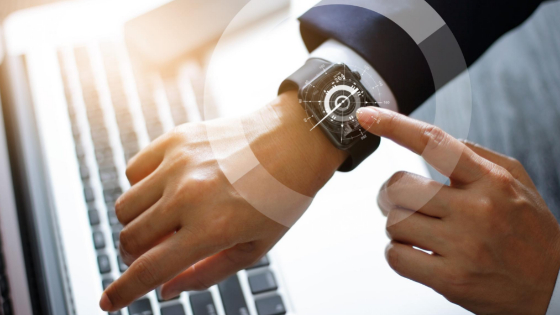Health wearables are coming! And they’re not going to be just for the wealthy. You can now buy health monitors that track all your vital signs, and even Disease Prevention tools like exercise monitors and sleep tracking.
You don’t even have to be a doctor or scientist to use these devices; you can design them yourself using software and hardware readily available today. So what are you waiting for? Get started on designing the perfect health wearable today.
The future of health wearables is patient monitoring and disease prevention. As we move into an era where more people are living with chronic diseases, it becomes increasingly important to monitor these patients’ health. This means that they need to be able to stay connected with their physicians, but also that they need to be able to do this at anytime, anywhere.
This means that we will see a shift towards remote monitoring of patients with chronic conditions. The ability to monitor your own heart rate and blood pressure will become easier than ever before. This will allow you to take control over your own health by allowing you to monitor yourself independently from a physician’s office or hospital setting.
We are also going to see a shift towards preventative care through wearable technology. We know now that many diseases begin as early as childhood or adolescence and can lead into adulthood if left untreated.
With wearable technology becoming so prevalent in our society today, we will start seeing more companies develop products that allow parents or caregivers monitor their children’s activities throughout the day which include exercise, sleep patterns and eating habits (among others).
What are Health Wearables
Health wearables are devices that allow users to track their health and fitness. The most common type of health wearable is a patient monitor, which allows you to track the blood pressure, heart rate, and other important health metrics.
Other types of health wearable include body scanners and smart watches that allow you to track your steps, sleep quality, and more.
What Types of Health Wearables are Available Now
There are several types of health wearables currently available on the market. Patient monitors are the most common type of health wearable, but there are also body scanners and smart watches that can be used for disease prevention purposes.
In addition to patient monitors, there are other types of health wearable such as body scanners and smart watches that can be used for general monitoring purposes. It’s important to choose a type of healthworn based on your needs and preferences.
For example, if you want to track your blood pressure or heart rate while walking around town, a patientmonitor may be the best option for you. However, if you only plan on using the device during specific activities (like working out), a body scanner may be more suitable for you.

What Will Be the Future of Health Wearables
There is no one answer to this question since future developments in medical technology will likely change how we use health wearable devices. However, some possible future developments for healthcare include:
- Addition of sensors inside clothing so that data gleaned from these garments can be used to identify diseases or conditions
- Development of medical-grade waterproof fabrics so that alarms or other notifications can be sent even when clothes are wet
- Ability to embed sensors within tattoos or piercings so information about those tattoos or piercings can be tracked and analyzed
- Integration with mobile apps so patients can receive real-time alerts about their physical well-being
- Use of machine learning algorithms in order to improve accuracy and efficiency when tracking data
- Use of contact lenses with sensors that collect data about wearer’s eye movements
It’s clear that there is still much potential forhealthwearabledevicesinthefuture! Keep an open mind as new technologies continue to develop in order to find ways to save money on your next trip abroad.
What are the Requirements for Health Wearables
There are a few requirements for health wearable devices in order to be legal in most countries. These requirements typically involve meeting certain safety and quality standards, as well as demonstrating that the device is bona fide health equipment.
Many countries require that health wearable devices be worn on the body at all times, which can often lead to inconvenience or discomfort when traveling. Keep an open mind as new technologies continue to develop in order to find ways to save money on your next trip abroad!
There are a few requirements that must be met in order for a health wearable to be successful. These include meeting the safety and regulatory requirements of the country or region where it will be used, as well as meeting the quality and design standards of the manufacturer.
In order to be worn by people, health wearables need to meet one or more of the following criteria:
- They need to adhere to national safety guidelines
- They need to meet medical standards
- They need to meet environmental standards
- They need to comply with international health regulations
Some requirements for health wearable devices include meeting health safety guidelines, being compliant with regulations in your specific country, and having a certification from a governing body.
How to get started with Health Wearables
One of the leading ways to improve your health and protect yourself from disease is by using wearable technology.
There are a number of different types of health wearables that can be used to monitor a variety of health conditions, including heart rate, blood pressure, and even diabetes levels.
Get started with Disease Prevention
While it may seem like a daunting task to get started with wearable technology, there are plenty of resources available online and in libraries to help you get started.
For example, the American Heart Association has an online patient guide that can help you understand the basics of wearable technology and how it can be used in order to improve your health.
Additionally, the Centers for Disease Control and Prevention (CDC) has a wealth of information on diseases that can be prevented through healthy lifestyle habits, including Wearable Health Technologies
How to Get started with Health Wearables
There are a variety of health wearable products on the market today. To get started, you’ll need to decide what type of healthwearables you want to purchase.
There are patient monitoring wearables and disease prevention wearables, both of which can be helpful in improving your health and preventing disease.
Learn the Basics of Health Wearables
In order to understand how health wearables work, it’s helpful to first learn about their basic concepts. In this section, we’ll cover the basics of medical devices and how they work in relation to healthwearable technology.
We’ll also explore some general tips for getting started with health wearable technology.
Get started with Patient Monitoring
Once you have a basic understanding of how healthwornables work, it’s time to start monitoring patients! In this subsection, we’ll discuss how patient Monitoring works and some tips for getting started.
We also provide an overview of diseases that may be caused by infectious agents and howhealthwearable technology can help protect you from becoming infected.
Tips for Successfully Investing in Health Wearables
Investing in health wearables is a great way to stay up-to-date on financial news. By doing this, you’ll be able to make informed decisions about which health wearables to purchase and when to invest.
Additionally, by diversifying your investments, you’ll be less likely to succumb to volatility in the health wearable market.
Diversify Your Investments
By diversifying your investments, you’ll be less likely to succumb to volatility in the health wearable market. This will allow you to experience some highs and lows while invested in this industry, which can provide excellent risk management skills.
Stay Up-to-Date on Financial News
Stay up-to-date on financial news is another important step in successfully investing in health wearables. By doing so, you’ll be able to avoid being misled by recent news stories and understand how the current state of the industry affects your investment decision-making process.
Additionally, staying up-to-date will help keep you informed of changes that may affect yourhealthwearable investment options.
Be Prepared for Volatility
There are always risks associated with any type of investment, but volatility may pose a particular challenge for health wearables investors.
By being prepared for volatility, you can mitigate these risks and increase your chances of making an accurate investment decision.
Are Health Wearables Going to be the Next Big Thing in Healthcare?
It’s no secret that wearable technology is growing in popularity. From fitness trackers to smart watches, we’re all using technology to better understand our health and well-being. But what does this mean for you?
As more people use wearables for health monitoring, we’re starting to see a shift away from reactive care—where doctors wait until something goes wrong before treating it—to proactive care: where doctors can identify potential problems before they even happen.
In fact, when it comes to heart disease, new research suggests that wearable devices may be able to predict heart attacks up to 7 years before they occur! That’s right: 7 whole years before any symptoms appear!
The future of health wearables is looking bright! In fact, according to research from Business Insider Intelligence (BII), health wearables will see revenues of $28 billion by 2022. That’s 2x growth over the expected revenues for 2019!
The implications here are huge: if we can predict heart attacks far enough in advance, then we’ve got plenty of time to intervene and stop them from happening altogether. This would mean fewer hospitalizations and less suffering for patients who might otherwise have died suddenly without warning or explanation.
Health Wearables are an important part of our health and well-being. By understanding the requirements for health wearables, getting started with them, and staying up-to-date on financial news, you can ensure that your investments are successful. Additionally, have a long-term investment strategy in mind so that you can grow your business over time.
Diversify your investments to avoid any one type of health wearable from taking all the market share, and be prepared for volatility whenever new products are released.
Contact us for more relevant details. Check our YouTube Channel, Digital Health & Wearables Series. To find out more about how we can help you with your Digital Healthcare Transformation, Healthcare organizational growth, or Healthcare brand positioning, please get in touch via phone +44 (0) 203 3620421 or via e-mail: info@digitalsalutem.com





